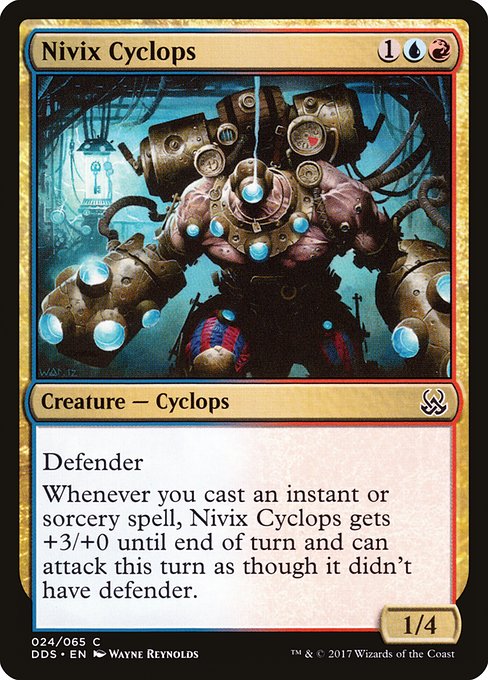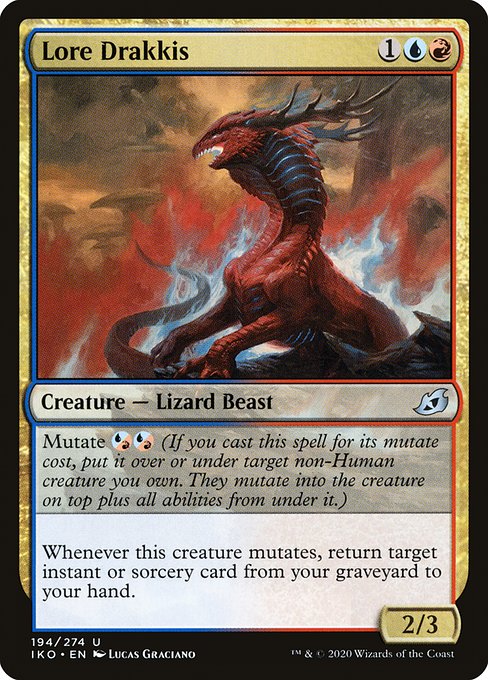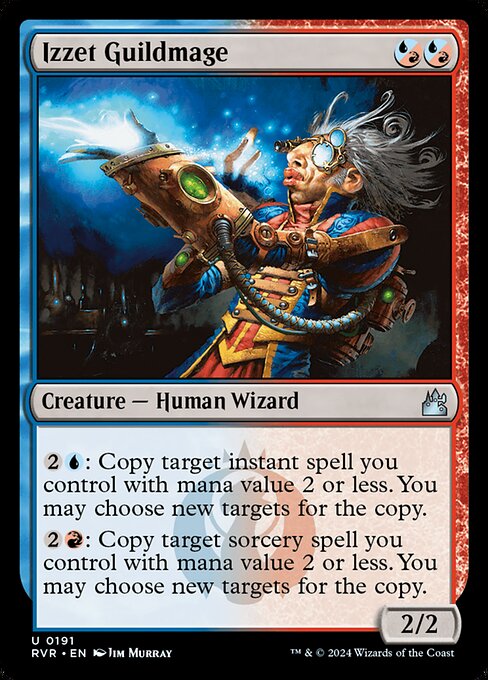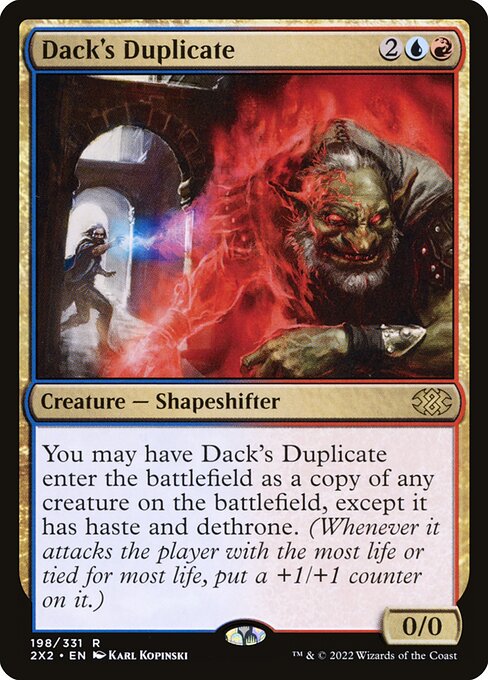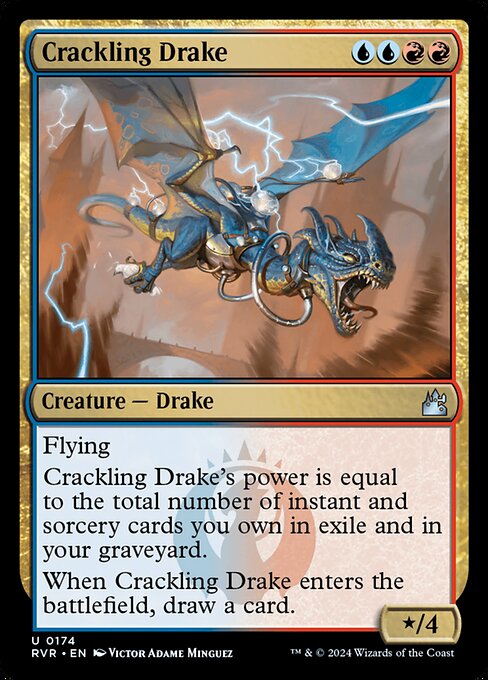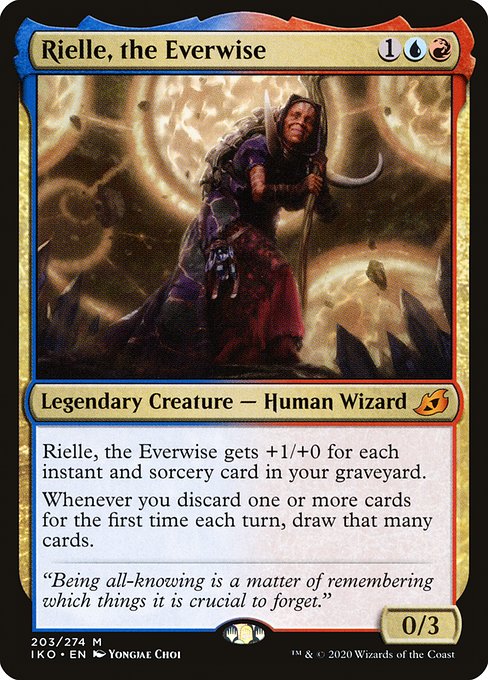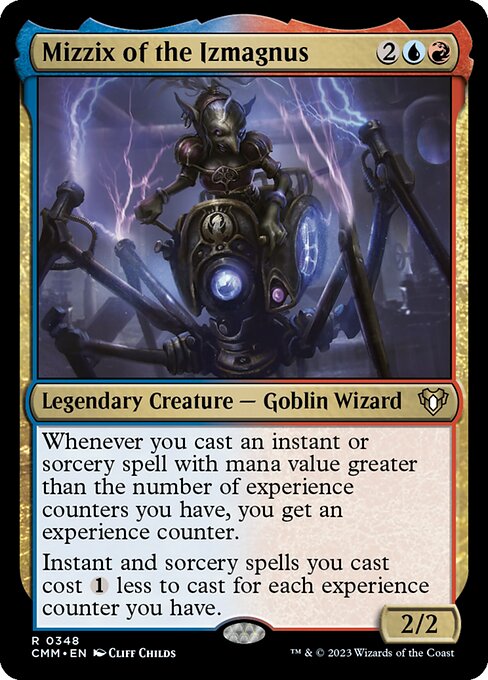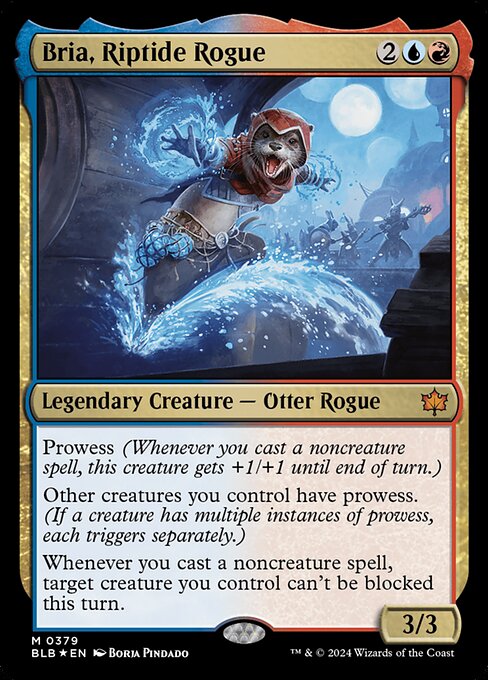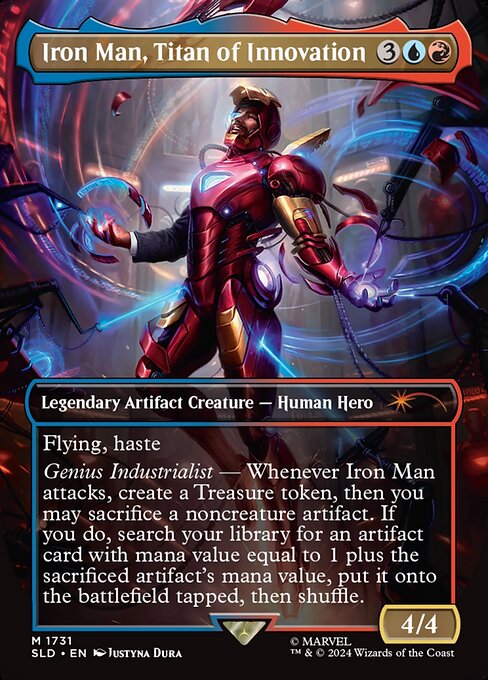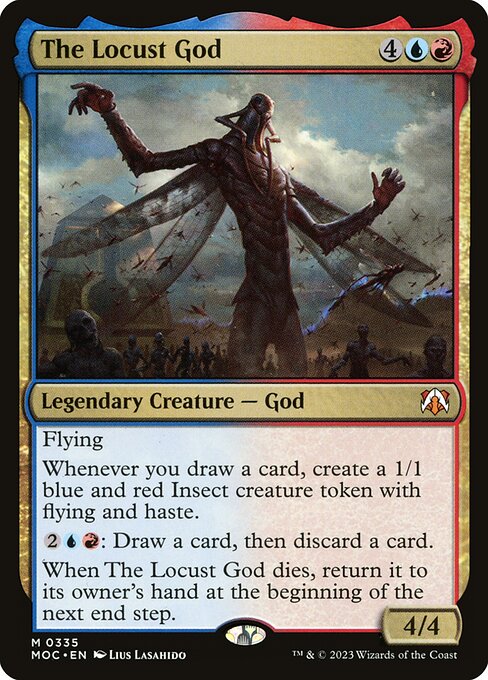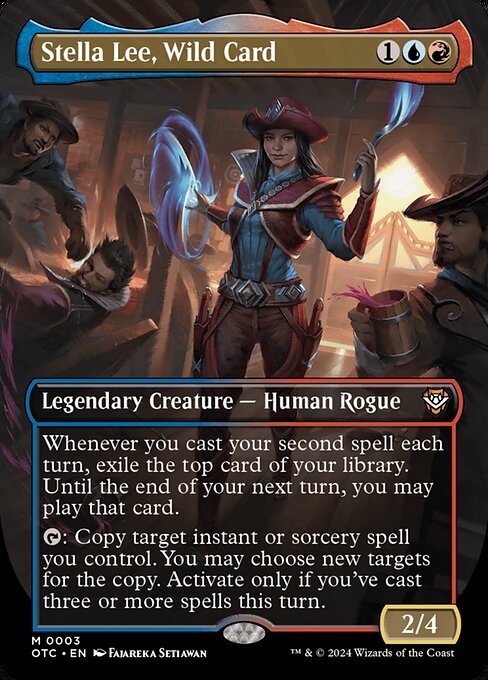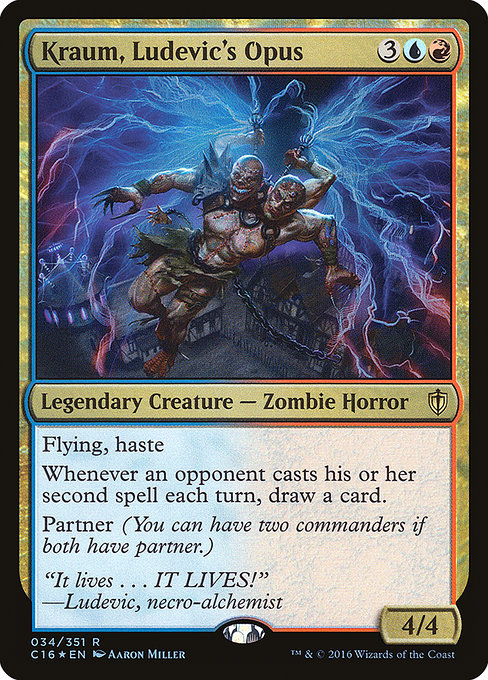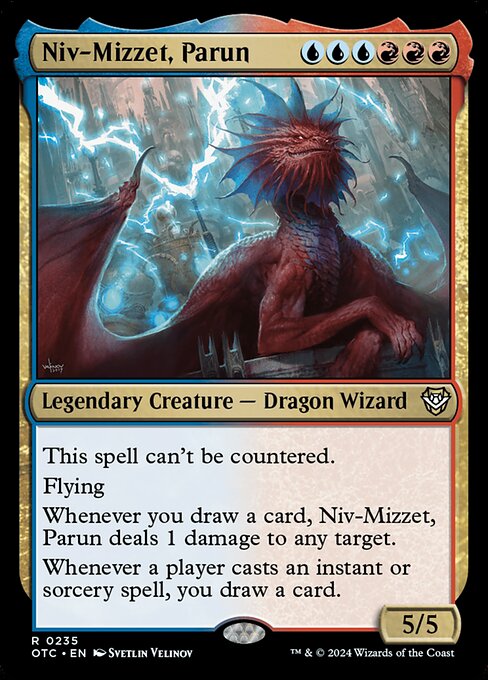The post How Many Removal and Counterspells Is “Enough” in Magic the Gathering? appeared first on Kraken Opus.
]]>If you’ve ever lost a game while holding three “answers” that didn’t answer the thing killing you, you already understand the problem. We all want our decks to “do the thing.” But we also want to not instantly die to the other guy’s thing.
That’s why Interaction Packages matter. The real question is not “should i run removal or counterspells?” It’s “how much do i need before my deck stops feeling helpless, without turning into 99 cards of polite disagreement?”
This post is about building an Interaction Packages baseline you can start from, and then tuning it so it fits your deck, your pod, and your format.
Why “enough” is a moving target
“Enough” depends on two realities:
- Your opponents are not goldfishing. They’re trying to win, and some wins happen fast.
- Every interaction spell you add is a card that isn’t ramp, draw, synergy, or your actual win condition.
So the goal of Interaction Packages is not to “answer everything.” It’s to reliably answer the few things that beat you most often.
And yeah, that means you need to know what those things are. (Painful, but true.)
A baseline Interaction Packages template (Commander vs 60-card)
Let’s get practical. Here are starting points that show up again and again in deckbuilding advice and real lists.
Commander (EDH) baseline
For a typical mid-power Commander deck, a clean starting point looks like this:
- 8 to 10 spot removal (cards that remove a specific threat)
- 2 to 3 board wipes (or fewer if your deck is creature-swarm and hates wiping)
- A small stack package if you’re in blue (often 3 to 7 counterspells, more if you’re control)
- 1 to 3 “weird answers” that hit graveyards, combos, or hard-to-remove commanders
If you’re building hard control, your Interaction Packages shift heavily toward stack interaction. At that point, double-digit counterspells can be normal because stopping haymakers is basically your whole plan.
60-card Constructed baseline
Constructed decks are more consistent (four-ofs), so you can run fewer “kinds” of answers and still find them. A simple baseline:
- Aggro: 4 to 8 removal spells, mostly cheap
- Midrange: 6 to 12 removal spells, plus some flexible interaction
- Control: lots of interaction, but the mix matters (cheap answers early, bigger answers later)
Control decks lose when they can’t interact early, and they also lose when they draw only answers and no way to turn the corner. That balance is basically the whole job.
Don’t count “removal” as one bucket
One reason Interaction Packages feel wrong is that players treat removal like it’s all the same. It isn’t.
Here’s a better way to think about it.
1) Creature removal
You need it, because creatures still kill people the old-fashioned way.
But creature-only removal is where a lot of decks stop, and that’s how you lose to:
- a value engine artifact
- an enchantment that turns off your plan
- a planeswalker that quietly takes over the table
2) Artifact and enchantment removal
In Commander especially, you will face artifacts and enchantments that are basically “must answer.” If your deck can’t touch them, your Interaction Packages are lying to you.
Also, “utility artifacts” are a whole category of stuff people play that isn’t a win condition, but it makes their deck feel unfair anyway. If you want examples, Kraken Opus has a solid rundown here: What Are Utility Artifacts in MTG.
3) Graveyard interaction
You don’t need to turn into the graveyard police. But you do want at least one or two cards that can stop the “oops, i reanimated half my deck” player.
In some metas, graveyard hate is not optional. It’s just part of responsible adulthood.
4) “Answer the player” interaction
This is the stuff that stops combos, protects your win, or buys a turn:
- counterspells
- protection spells
- silence effects
- stax pieces (if your group is into that)
Not every deck needs all of this. But every meta has something that demands it.
Counterspells: the stack tax, and when to pay it
Counterspells aren’t “better removal.” They’re different removal.
They trade one thing for one thing, but the timing is the whole point: you stop the threat before it hits the battlefield, before it triggers, before it becomes a problem that needs a second answer.
So how many should you run?
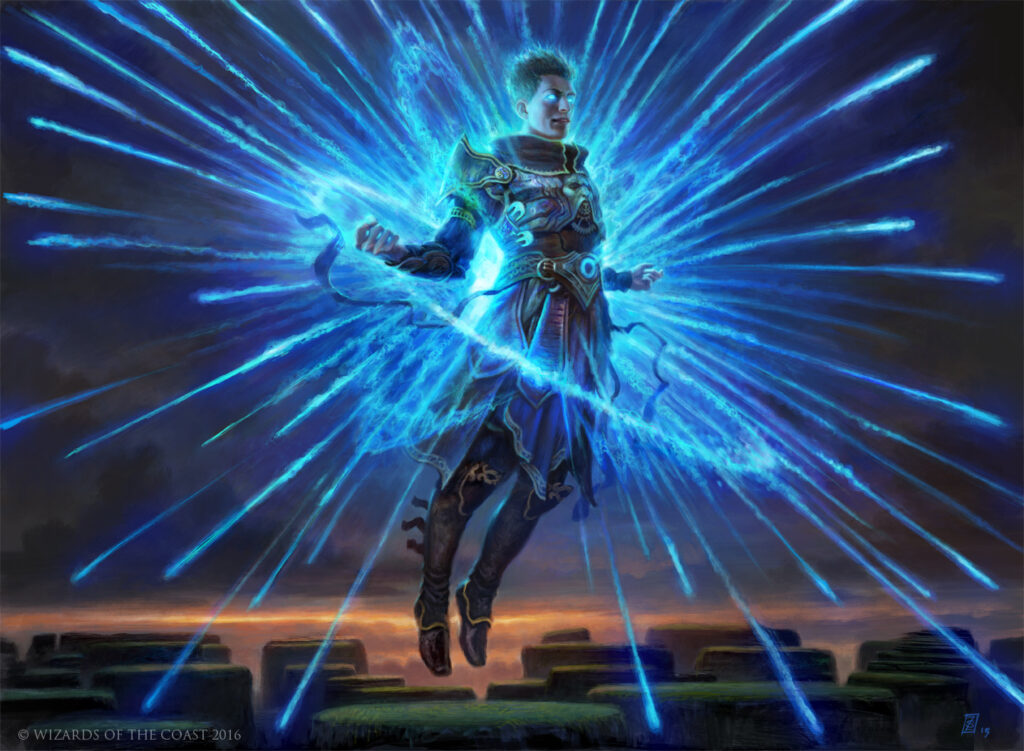
If you’re not a control deck
Most blue decks don’t need to be Counterspell City. A small stack package is often enough:
- a few hard counters
- a couple “protect my board / protect my combo” counters
- maybe one “oh no” button
That’s it. Your Interaction Packages can lean on permanent removal for the rest.
If you are a control deck
Now you’re paying the stack tax on purpose.
Control wants enough countermagic that you can stop the spells that matter, not just the first scary thing someone casts. That usually means a lot more counterspells and a lot more card draw, because control without draw is just “eventually you run out of permission and die.”
Also, be honest about your pod. In some casual Commander groups, 20 counterspells is not “strong.” It’s “congrats, you are now the villain in three separate group chats.”
Tuning Interaction Packages to your deck’s job
Here’s the simplest way i know to tune counts without overthinking it: ask what your deck is trying to do during turns 1 to 6.
Proactive decks (aggro, stompy, go-wide)
You’re trying to end the game before the table stabilizes.
Your Interaction Packages should be:
- cheaper
- narrower
- mostly about removing blockers, stopping one key engine, or protecting your board
If you stuff your deck with too many answers, you’ll stall out and do the saddest thing an aggro deck can do: pass the turn with seven cards in hand and no pressure.
Midrange decks
Midrange decks win by trading resources and ending up with the last meaningful threat.
So your Interaction Packages should be:
- flexible answers
- a spread across creatures and noncreatures
- enough density that you can interact early without mulliganing into it
Midrange is the archetype that gets punished the hardest by “all my removal only kills creatures.”
Combo decks
Combo is weird, because your interaction is often defensive.
You’re not trying to stop everyone from playing Magic. You’re trying to stop the one spell that stops you.
So your Interaction Packages can look like:
- fewer total answers
- more protection
- more “force through” tools
Combo decks that run lots of removal but no protection often lose the same way every time: “i had it, and then my thing got removed.”
Control decks
Control wants to answer threats efficiently, then win once the table is out of gas.
So your Interaction Packages should be:
- high density
- heavy on stack interaction
- backed by real card advantage
If you don’t have the draw engine, you’re not control. You’re just delaying your own loss.
A quick self-test: are you seeing interaction when it matters?
You don’t need perfect math to feel this out. Play 5 to 10 games and notice:
- Do you regularly have one piece of interaction by the time the first “must answer” card hits?
- Do you often have the wrong kind of answer (only creature kill, no artifact/enchantment hate)?
- Are you holding answers but can’t cast them because you’re tapped out every turn?
- Are you interacting a lot, but never actually advancing your own win?
If you keep missing your answers, raise the count or add more card draw. If you keep drawing answers and falling behind anyway, lower the count or swap to more flexible interaction.
That’s the boring truth: Interaction Packages aren’t a sacred number. They’re a tuning knob.
Common mistakes that make Interaction Packages feel bad
“I have removal” (but it’s all the same removal)
If 9 of your 10 answers kill creatures, you will still lose to the enchantment that shuts off your deck. Diversify.
Too many expensive answers
A hand full of five-mana answers looks great until you die on turn five with five mana in play.
Cheap interaction is what keeps you alive long enough to cast the big stuff.
You built answers, but not access
If you want a heavier Interaction Packages plan, you usually need more draw, filtering, or recursion. Otherwise, you burn through answers and end up topdecking lands while the table rebuilds.
Being “the table’s removal service”
If you’re answering everyone’s threats and not building toward a win, you’re basically doing unpaid work. Sometimes the correct play is letting Player B deal with Player C’s problem.
Yes, it feels wrong. No, you are not the table’s dad.
Closing thoughts
So how many removal spells and counterspells is enough?
Enough is when your deck stops losing to the same two or three patterns, and you still have room to actually win the game.
Start with a baseline. Tune it after real games. And keep your Interaction Packages honest: answers should match the threats you actually face, not the threats you imagine when you’re building at 1:00 a.m.
If you want more MTG topics from Kraken Opus, the main blog feed is here: Kraken Opus Blog.
The post How Many Removal and Counterspells Is “Enough” in Magic the Gathering? appeared first on Kraken Opus.
]]>The post PrintMTG vs MPC: Which Is Better for MTG Proxies? appeared first on Kraken Opus.
]]>If you are printing MTG proxies for actual gameplay, PrintMTG is the better overall pick because it is easier, faster to get in-hand in the US, and the quality is close enough to make the workflow advantage the whole story. MPC can win on price when you print big batches, but you pay for it in time and effort.
Short intro and context
Print MTG is purpose-built for Magic players. It is not trying to be a generic card printing platform. It is trying to take you from “here’s my decklist” to “my proxy deck arrived” with as few weird steps as possible.
MPC (MakePlayingCards) is a real card manufacturer used by game designers, Kickstarter projects, and hobbyists who want custom decks printed. It is popular in proxy circles because the print quality is good and bulk discounts can be excellent, especially when you scale up quantities.
So PrintMTG vs MPC is not really a debate about whether either company can print a card. They can. It is a debate about who is optimized for printing MTG proxies without turning your evening into a layout job.
Quality (materials and print)
In our hands-on testing, PrintMTG and MPC land in the same practical tier for sleeved play. Both look good on the table and both shuffle fine. PrintMTG’s prints are clean and consistent across a full deck, which is what you actually notice once you stop staring at individual cards under a lamp like a goblin.
MPC’s big quality advantage is optionality. Because they are a general manufacturer, they offer more knobs to turn, like different stocks and finishes. Their poker-size custom game card product line also calls out a blue core layer intended to reduce transparency, and they support large deck sizes, which speaks to “real card printing” roots rather than MTG-only convenience.
Where PrintMTG wins on quality is not “it is magically better.” It is that the output is reliably solid for the use case it is aimed at: printing proxies that look good, read clearly, and feel consistent across a whole deck.
If you play unsleeved, you will care more about micro-differences in finish and thickness. If you play sleeved, the gap shrinks fast.
Price and value
MPC can be cheaper per card when you scale. That is the main reason it remains the default recommendation in certain proxy communities. MPC is built for everything from one-off prototypes to large runs, and their pricing structure tends to reward bigger quantities.
PrintMTG is typically more “fair price for a deck printing service” than “race to the absolute lowest per-card cost.” You are paying for the MTG-specific tooling and the reduced setup time. PrintMTG also pushes quantity discounts, but the real value is that you are not doing the extra work MPC usually requires to get to a finished order.
So PrintMTG vs MPC on value comes down to what you value:
- If you value your time and want a deck fast, PrintMTG is the better deal.
- If you are printing a cube, a playgroup order, or a giant batch and you have patience, MPC can win on raw per-card economics.
Design, templates, and customization
This is where the two companies feel like they come from different planets.
PrintMTG’s killer feature is decklist printing. You can paste in an entire MTG deck list for printing, then select versions and quantities in a workflow that actually matches how Magic players build decks. PrintMTG also offers tools like card search and an editor for custom designs, but the key point is that you do not have to build the entire project from scratch just to print a Commander deck.
MPC gives you a card maker and an online builder, but it is not MTG-aware. It is for custom card projects. That means you are typically managing images and layout decisions that PrintMTG simply handles as part of the service. MPC is flexible, but it assumes you are comfortable doing more of the production work.
So PrintMTG vs MPC on customization is a funny trade:
- MPC is more configurable in a generic sense.
- PrintMTG is more usable for MTG, which is the kind of customization most people actually want.
Ordering experience
PrintMTG’s ordering experience is the reason it wins this comparison.
The PrintMTG flow is basically:
Decklist in, review, choose versions, order.
That is it. It feels like it was designed by someone who has built a deck at midnight and wanted to play it this weekend.
MPC is more like:
Project setup, file prep, confirm fronts and backs, deal with a general-purpose tool, then order.
If you already have an established MPC workflow, it is not awful. But for most players, the friction is real. PrintMTG vs MPC is often decided the moment someone realizes they can stop doing extra steps that have nothing to do with playing Magic.
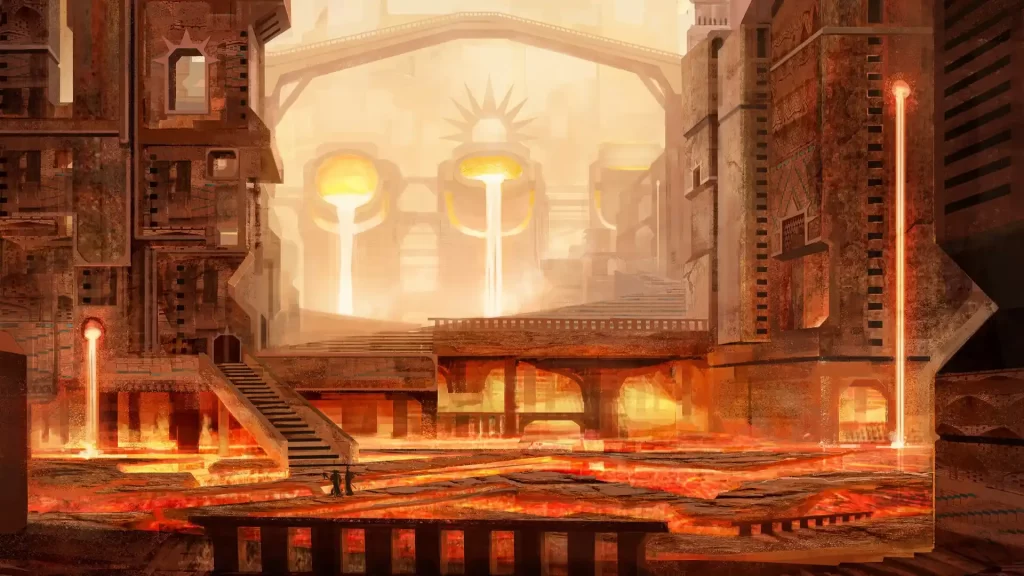
Turnaround time and shipping
If you are in the US, shipping tends to favor PrintMTG.
PrintMTG states that they typically print orders within about two business days, and they offer multiple shipping speeds including standard and expedited options. They also publish a US address and support hours, which is small, but it helps set expectations.
MPC ships worldwide and offers multiple shipping methods, but they are headquartered in Hong Kong, and widely-circulated industry writeups note their factory is in Guangdong province in China. In practice, that usually means longer transit to the US than a US-based shipper, plus more variability depending on the shipping option and customs.
Even MPC’s own FAQs describe timelines in the range of roughly one to two weeks depending on processing and shipping choices. In real proxy community discussions, “two to three weeks” is a common lived experience for US buyers.
So if you have a timeline, PrintMTG is the calmer choice.
Customer service
PrintMTG publishes clear contact info and support hours. If something goes sideways, you know where to start and you are not guessing whether your order is stuck in the void between continents.
MPC is a large, established manufacturer and they have robust help pages, but the distance factor matters. When something takes longer, you are often dealing with international logistics rather than a local shipping delay.
This is not about either company being “good” or “bad.” It is about what kind of problems you are likely to have.
PrintMTG problems tend to be normal order issues.
MPC problems tend to be “international shipping and production timing” issues.
Best for
PrintMTG is best for:
- Printing MTG proxies for actual play, especially Commander
- Anyone who wants decklist to deck, with minimal setup
- US buyers who want faster, more predictable delivery
- Players who care about consistent deck feel more than boutique finish options
MPC is best for:
- Large bulk proxy runs where per-card price matters most
- People who already have an MPC workflow and do not mind file prep
- Game designers and hobbyists who want custom decks beyond MTG
- Buyers outside the US who are already used to international production timelines
Brand A (PrintMTG) pros and cons
Pros
- Decklist printing is the whole point, and it works
- Fast, MTG-native ordering flow with less prep work
- Similar practical quality to MPC for sleeved gameplay
- More predictable US delivery experience
Cons
- Less appealing if your only goal is lowest possible per-card price in huge bulk
- Fewer “choose every stock and finish detail” options than a manufacturer platform like MPC
Brand B (MPC) pros and cons
Pros
- Strong bulk pricing at higher quantities
- Lots of product flexibility for custom card projects
- Established manufacturer with wide production capability
- Options for stock and finish beyond what MTG-only services usually offer
Cons
- More setup work for MTG proxies
- Slower to arrive in the US on average due to overseas production and shipping
- Not MTG-aware, so you spend time doing tasks that PrintMTG removes
Final verdict
PrintMTG vs MPC is easy to call if your goal is MTG proxies specifically.
MPC can absolutely produce great-looking cards, and it can be cheaper when you print big batches. But it is not designed around printing Magic decks, and the ordering process reflects that. If you have ever thought, “I want to play this list, not run a small print production,” you already understand why PrintMTG wins.
PrintMTG delivers similar real-world quality, a dramatically easier decklist workflow, and faster, more predictable shipping for US players. For most people who want proxies for casual play and testing, PrintMTG is simply the better overall choice.
The post PrintMTG vs MPC: Which Is Better for MTG Proxies? appeared first on Kraken Opus.
]]>The post How to Print MTG Proxy Cards | The Easiest Method appeared first on Kraken Opus.
]]>The post How to Print MTG Proxy Cards | The Easiest Method appeared first on Kraken Opus.
]]>The post Planning for the Commander Decks of Lorwyn Eclipsed appeared first on Kraken Opus.
]]>Lorwyn Eclipsed hits tabletop on January 23, 2026, with prerelease starting January 16. That’s “plenty of time” right up until holidays, travel, and real life turn six weeks into about nine minutes. So yeah, it’s watchlist season. Not “panic buy” season. Watchlist season.
We’re getting two Commander precons: Blight Curse (Jund) and Dance of the Elements (five-color). Even with partial info, you can start lining up the obvious upgrade cards and the cards that tend to pop when a theme gets a big spotlight.
What we know about the Commander Decks of Lorwyn Eclipsed
Wizards has confirmed there are two Commander decks alongside the set. Retailer listings and product blurbs point to two clean themes:
- Blight Curse looks like it’s built around -1/-1 counters in Jund.
- Dance of the Elements looks like five-color Elementals, with a mix of ramp, big bodies, and some sacrifice or copy-style value.
If you’ve played Commander long enough, you know what happens next: everyone remembers the same 20 “on theme” cards, and a chunk of them get bought out for a week. Then the decklist drops and half the internet realizes the obvious reprints are in the box. That’s the whole game.
How i approach precon speculation without lighting money on fire
A few simple rules keep you from getting wrecked by reprint risk:
- Separate “likely reprint” from “likely upgrade.” If a card is perfect for the theme and has a history of being reprinted, treat it like it’s guilty until proven innocent.
- Prioritize versions with weird supply. Old foils, borderless foils with low inventory, Secret Lair variants, and Universes Beyond versions tend to move differently than basic nonfoils.
- Have a plan for exiting. If you’re speccing, decide now if you’re selling into hype, buylisting, or holding long-term. Waiting until you’re staring at a spiking graph is how you end up holding 37 copies of something nobody wants.
And if you’re on the “i’m just building the deck” side of things, it’s still worth tightening your upgrade plan early. A lot of these lists end up wanting the same support pieces, like protective and consistency tools. If you want a quick refresher, here’s our Kraken Opus guide on utility artifacts in MTG.
Blight Curse watchlist for Jund -1/-1 counters
A -1/-1 counters precon is basically a permission slip for a bunch of older Shadowmoor and Amonkhet-era cards to get re-evaluated. Some are obvious. Some are “how is this still cheap?” cards. And some are traps.
The engine pieces people always want
Blowfly Infestation
This is one of the most “oh no” cards in the whole space. It turns a board with counters into a chain reaction. If Blight Curse is even moderately popular, people will chase this.
Flourishing Defenses and Nest of Scarabs
These are the classic “turn counters into bodies” payoffs. They play well with sweepers that distribute counters, and they scale with the table. If they dodge a reprint, they get attention fast. If they do get reprinted, the fancy versions are where the conversation shifts.
Hapatra, Vizier of Poisons
Hapatra is the cleanest commander-adjacent payoff for -1/-1 counters. The only question is whether Wizards wants an older legendary to upstage the new face commander. If she’s not in the deck, she becomes one of the first upgrades people add.
The “this looks like it belongs in the precon” pile
These are strong, on-theme, and feel like the kind of cards that end up in the 99:
Black Sun’s Zenith
It’s flexible, it scales, it shuffles back in, and it plays ridiculously well with token-maker payoffs like Hapatra, Nest of Scarabs, and Flourishing Defenses. The safest “spec” angle here is not the cheapest copy. It’s the versions where supply is thinner and the decklist doesn’t instantly nuke the price.
Crumbling Ashes
Slow, but brutal if the table is living with counters. Precons love this kind of repeatable removal because it reads splashy without being complicated.
Dusk Urchins
This is the kind of card that suddenly looks clever again when the theme returns. Big counter sweeps, big card draw. Simple.
Fevered Convulsions
This one is clunky. But clunky cards still spike when they match the theme and nobody has thought about them in years. Just don’t convince yourself it’s secretly amazing.
The likely “value reprint” cards
Necroskitter
If Blight Curse is real -1/-1 counters, Necroskitter is basically a mascot. It’s powerful, specific, and the kind of “looks expensive” reprint Wizards likes to use to prop up perceived deck value. Great card. Dangerous timing.
The Scorpion God
If you see a -1/-1 deck, you check The Scorpion God. If it’s not reprinted, it’s an easy upgrade and people will grab copies. If it is reprinted, the premium versions are the only interesting angle.
Yawgmoth, Thran Physician
Yawgmoth does everything, and he plays absurdly well with counter-based engines. This is less about “will it be in the precon” and more about “will demand rise anyway.” If the deck turns a bunch of players onto counter loops, Yawgmoth gets dragged upward with the tide.
Massacre Girl, Known Killer
If you’re putting -1/-1 counters on everything, turning that into card advantage is exactly what Commander players want. She’s also the kind of upgrade that gets bought in a hurry once people see gameplay clips.
The weird one
Misfortune (Reserved List)
It’s on-theme by color and wording, but it’s also not great. Still, Reserved List cards sometimes spike for irrational reasons, especially when a niche mechanic gets a fresh spotlight. If you’re allergic to gambling, this is where you back away slowly.
The “probably safe from reprint” angle
Spitting Dilophosaurus
Universes Beyond cards are a different kind of inventory. Even when Wizards reuses UB cards, it’s not always in the obvious place and not always in the same treatment. If Blight Curse wants repeatable counters, this is the kind of card people discover late and then scramble for.
Dance of the Elements watchlist for five-color Elementals
Five-color Elementals is the kind of deck that turns into a parts list fast. People will upgrade the mana. They’ll grab tribal staples. And they’ll chase the cards that make Elementals feel unfair.
The biggest thing to remember is that the main set will likely have Elementals too, which raises the odds of reprints for the obvious hits. So the best targets are often the cards that are good, but not “front page of the tribe.”
The staples that might soak up demand anyway
Risen Reef
This is the card that makes Elementals feel like a real deck instead of a pile of typal creatures. If it’s not in the precon, it becomes an instant upgrade for basically everyone.
Flamekin Harbinger
Tutors that cost one mana always get attention, especially in tribes that have a deep bench of payoffs. It’s also the kind of card players love upgrading into special versions.
Incandescent Soulstoke
This one is an actual watchlist card because it swings between “bulk rare” and “why is this five dollars?” depending on demand and reprint timing. Two relevant abilities on one card, both strong, both tribal.
The “might get overlooked” picks
Creeping Trailblazer
Not the flashiest, but it does the job. Tribal anthem plus mana sink is always playable. These are the exact cards that jump when the obvious reprints take up all the slots.
Chandra’s Embercat
Two-mana tribal ramp creatures are always in the conversation, even when they don’t make final cuts. If the precon leans into “big Elementals, fast,” this gets a second look.
Omnath check-in
When Elementals show up, people always ask, “which Omnath do i want?” The short version: the earlier Omnaths that actually care about Elementals tend to get the most love as upgrades. And the more premium printings can move just because a bunch of players decide they’re building the deck at the same time.
Versions to prioritize when you do buy
If you’re buying before full decklists, the boring copies are usually the worst risk.
A few version types tend to hold up better:
- Old foils with low inventory
- Borderless foils that were opened less than people assume
- Secret Lair versions that Commander players treat as “default bling”
- Universes Beyond versions that have their own collector demand
This is where “foil multiplier” and supply actually matter. When everyone tries to upgrade at once, the premium versions run out first.
Timing: when to buy and when to wait
If you only remember one thing, make it this:
- Before decklists: build your list, identify the “overlooked upgrades,” and only buy the stuff you’re comfortable holding if you’re wrong.
- At decklist reveal: that’s when you pounce on the cards that didn’t get reprinted and are obvious upgrades.
- After release: the best deals are often 2 to 6 weeks later, when the hype cools and people move on to the next thing.
And yes, waiting is the safest route. It’s also the route where you miss the easy gains. That trade-off never changes. It’s the tax we pay for caring about cardboard.
If you want more MTG reading while we wait for previews, the Kraken Opus Blog has the running archive.
Conclusion
The Commander Decks of Lorwyn Eclipsed are lining up to hit two themes that Commander players love: counters that turn into value, and a five-color tribe with a deep pool of upgrades.
For Blight Curse, the key is separating the “this will be reprinted” cards from the “this becomes an instant upgrade” cards, then watching premium versions where supply is thin.
For Dance of the Elements, expect a rush on tribal engines and mana support, with the best opportunities coming from the cards that are good but not obvious enough to eat a reprint slot.
Make your list now. Keep your powder dry. And when the decklists drop, move quickly on what’s missing.
Wizards of the Coast: “Collecting Lorwyn Eclipsed: A First Look” (product overview, dates, deck names). MAGIC: THE GATHERING
Wizards of the Coast: Lorwyn Eclipsed product page (release date). MAGIC: THE GATHERING
Wizards of the Coast: “Where to Find Lorwyn Eclipsed Previews” (release and prerelease timing). MAGIC: THE GATHERING
TCGplayer product listing: Lorwyn Eclipsed Commander Decks (Set of 2), deck names. TCGplayer
The post Planning for the Commander Decks of Lorwyn Eclipsed appeared first on Kraken Opus.
]]>The post The “Too Many Taplands” Problem: When Slower Lands Lose You Games appeared first on Kraken Opus.
]]>Sure. But also… sometimes you did.
Most Magic games are decided by small timing edges. One missed two-drop. One turn where you couldn’t hold up removal. One awkward hand where you had the spell, but not the mana right now. And the sneaky culprit, especially in casual lists and precon upgrades, is the same every time:
Too many lands that enter the battlefield tapped.
Taplands aren’t automatically “bad.” They’re a tool. The problem is when they quietly pile up until your deck is always half a step behind the table. Let’s talk about what that looks like, why it matters, and how to fix it without turning deckbuilding into a spreadsheet hobby.
What counts as a “tapland” (and why they exist)
A tapland is any land that comes in tapped some or all of the time. That includes:
- Lands that always enter tapped (many budget dual lands, tri-lands, scry lands, etc.)
- Lands that enter tapped unless you meet a condition (like controlling a basic land type, having two other lands, revealing a land type, and so on)
- Lands that usually enter tapped early (some cycles are basically “turns 1–2 tapped, later untapped”)
Design-wise, “ETB tapped” is one of the most common ways Magic balances color fixing. Multi-color mana is powerful. The game often asks you to pay for that power with tempo.
And tempo is the key word. You don’t just “lose one mana.” You lose a turn of options.
The real cost: tempo loss is a snowball, not a single point
Here’s the simplest way to feel the problem:
If you play a tapland on turn two, you effectively took a turn where you had one less mana than your curve expects.
That can mean:
- Your two-drop becomes a three-drop.
- You can’t play a threat and hold up protection.
- You can’t double-spell on a critical turn.
- You pass with removal in hand but not enough mana to cast it.
And once you start missing early beats, you often keep missing them. Not because your deck is broken, but because you’re always reacting from behind.
In 60-card formats, this is brutal because games are faster and curves are tighter. In Commander, it’s still brutal because the table will snowball value while you’re “just getting set up.”
Signs you have too many taplands
If any of these feel familiar, your mana base is probably the issue (not your card choices):
- You keep hands that look fine, then you do nothing meaningful until turn 3–4.
- You’re constantly saying, “If this land was untapped, i had it.”
- You miss the chance to hold up interaction (counterspell, removal, protection) because your land drop ate your turn.
- You often can’t cast your commander on curve, even when you hit land drops.
- You’re stuck choosing between color fixing and tempo every early turn.
A lot of players respond by adding more ramp. That can help, but it can also hide the real problem: ramp doesn’t fix the turn where you needed untapped mana right now.
So… how many taplands is “too many”?
There isn’t one perfect number, because it depends on format, deck speed, and how strict your curve is. But there are solid rules of thumb that keep you out of the danger zone.
Commander (EDH)
Commander decks often run lots of lands, and games go longer, so you can “get away with” more taplands than 60-card. But that doesn’t mean you should.
A practical guideline:
- 0–4 taplands: feels smooth in most mid-power decks
- 5–8 taplands: noticeable, but manageable with good sequencing
- 9+ taplands: you’ll feel slow in almost every pod unless your deck is intentionally durdly
Also, watch out for the trap where your “taplands” are half your nonbasics because you upgraded spells first and left the mana base untouched.
60-card constructed
If you’re trying to curve out, the bar is much stricter:
- 0–2 true taplands in most proactive decks
- 3–4+ and you’re basically choosing to play slower than opponents
Control decks can tolerate a little more, but only if those lands are giving real payoff (card selection, utility, strong fixing) and your deck is built to trade early anyway.
Limited (Draft/Sealed)
Limited is the format where taplands are often fine, because curves are slower and color fixing matters. But “fine” still doesn’t mean “free.”
- A couple taplands is normal.
- A pile of them will make your draws clunky and your early turns weak.
Land sequencing: how to play taplands without punting tempo
Even before you change a single card, you can win games just by sequencing better.
The basic idea:
Play your taplands on turns when you weren’t going to use all your mana anyway.
That often means:
- Turn 1: tapland is usually safest if you don’t have a must-play one-drop
- Turns where you’re casting a spell that doesn’t use all your mana (like a 2-drop on turn 3)
- After you’ve stabilized, when one mana doesn’t change what you can represent
And the flip side:
Avoid playing taplands on turns where you want to:
- hit a key spot on your curve (2, 3, 4)
- hold up interaction
- double-spell
A good mental habit is to ask: “What do i need to represent next turn?” If the answer is “removal + protection” and you’re about to play a land tapped, you’re probably about to feel that mistake immediately.
Fixing the problem without spending a fortune
You don’t need the most expensive lands to get a much faster deck. The real upgrade is shifting your mana base toward untapped sources and cutting the worst offenders.
Step 1: cut the “no upside” taplands
If a land enters tapped and only taps for mana, it needs a very good reason to be there. In two-color decks, these are usually the first to go.
Step 2: keep taplands that actually pay you back
Some ETB tapped lands are worth it because they do more than fix colors. For example:
- lands that provide card selection (scry-style effects, surveil-style effects)
- lands that provide real utility (important abilities that matter later)
- tri-color fixers in decks that truly need them (especially 4–5 color), where casting spells at all is the priority
A useful test: “If this land entered untapped, would i still play it?”
If the answer is no, the upside probably isn’t real.
Step 3: add more basics than you think you should
This sounds boring, but basics do two important things:
- they enter untapped
- they make your conditional lands and ramp spells work better
A lot of “my mana is bad” decks aren’t short on fancy lands. They’re short on lands that just work.
Step 4: swap in “cheap untapped” cycles
There are plenty of land cycles that are commonly cheaper than premium staples but still help you play on curve. The names and prices change over time, so i won’t pretend there’s one perfect shopping list. But the categories that usually help are:
- lands that often enter untapped with light conditions
- lands that trade a small cost (like life) for speed
- lands that give you flexible color choices without entering tapped
If you’re upgrading slowly, aim for this simple ratio:
Every time you add a cool new spell, try to also upgrade one land that makes that spell easier to cast on time.
A quick “tapland audit” you can do in 5 minutes
Open your decklist and count:
- Always tapped lands
- Usually tapped early lands
- Conditional taplands (sometimes untapped)
Then ask:
- How many of category (1) do i have? (These are the danger.)
- How often do category (2) lands behave like taplands in my early turns?
- Do my conditional lands actually come in untapped in my deck, or is that wishful thinking?
Finally, set one clear target:
- “I’m cutting 3 taplands and replacing them with untapped sources.”
That alone will make your deck feel like it gained power, even though you didn’t change a single spell.
Conclusion: your deck isn’t “slow,” your lands are
Most people don’t lose because they played a tapland once. They lose because they played taplands every game, across the first four turns, and never got their feet under them.
If your deck feels clunky, start here:
- reduce the number of “no upside” taplands
- sequence tapped lands intentionally
- bias toward untapped sources and basics
- keep only the taplands that truly pay you back
Do that, and your deck will feel like it got smarter overnight. Same spells. Same strategy. Just… the ability to actually cast them when it matters.
The post The “Too Many Taplands” Problem: When Slower Lands Lose You Games appeared first on Kraken Opus.
]]>The post The 30 Best Izzet Creatures in Magic Ranked appeared first on Kraken Opus.
]]>And yeah, same.
Before we get to the ranking, quick housekeeping: if you’re fuzzy on common mechanics that show up in blue-red decks, these two are worth bookmarking: Ward in MTG guide and the Ultimate guide to Deathtouch.
What counts as an Izzet creature?
For this list, “Izzet” means the creature has a blue-red color identity. Most of the best ones reward you for spellcasting (spellslinger), copying spells, drawing cards, or turning “noncreature spell” into real pressure like tokens, counters, or direct damage.
How i ranked the best Izzet creatures
I ranked these on a mix of:
- Ceiling: how disgusting the card gets when it’s supported
- Floor: whether it still does something when you’re behind
- Deckbuilding pull: does it make you want to build around it
- Table impact: does the table have to respect it immediately
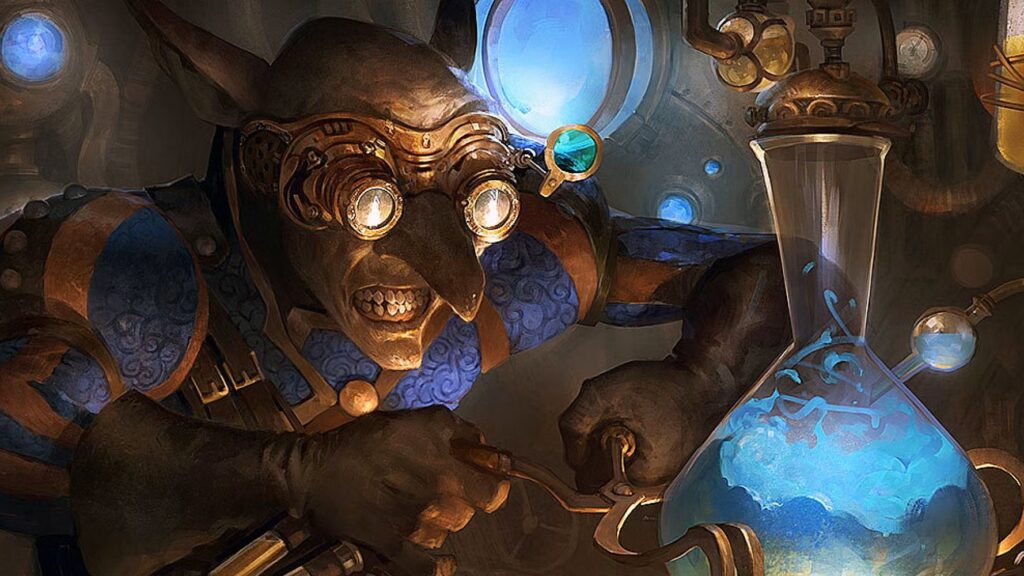
Now, the fun part.
The 30 best Izzet creatures ranked
30. Nivix Cyclops
A budget classic that turns every cheap instant into a threat. It looks innocent until you go “cantrip, cantrip, protection spell,” and suddenly someone is doing math they did not plan on doing.
Best pairings: cheap cantrips, protection, and any “make it unblockable” trick.
29. Stormchaser Mage
Prowess plus flying plus haste is still a clean package. It’s not flashy, but it punishes stumbles and turns your early interaction into real damage.
Best pairings: low-cost interaction and combat tricks that force through damage.
28. Lore Drakkis
Mutate gets weird fast, and Lore Drakkis is one of the reasons. Every mutate is a clean little rebuy for an instant or sorcery, which is exactly what a grindy spellslinger deck wants.
Best pairings: cheap mutate creatures, bounce effects, and efficient spells worth looping.
27. Izzet Staticaster
This thing is a menace in the right pods. It cleans up tokens, punishes small utility creatures, and quietly keeps certain strategies from ever stabilizing.
Best pairings: untap effects, pinger synergies, and ways to boost its damage.
26. Izzet Guildmage
If your deck has a lot of two-mana instants and sorceries, Guildmage turns “good” into “gross.” Copying interaction, copying draw, copying burn, it adds up fast.
Best pairings: efficient two-mana spells and any plan that cares about spell copies.
25. Wandering Mind
The “top six, grab a noncreature spell” effect is exactly what Izzet wants in midrange games. It smooths draws and keeps your hand from turning into three lands and regret.
Best pairings: spell-heavy lists and decks that want selection without spending a full turn.
24. Dack’s Duplicate
A clone that hits fast and usually hits hard. In creature-heavy games, it’s frequently the best creature on the table with haste stapled on.
Best pairings: metas with big creatures, sacrifice outlets, and “blink the clone” nonsense.
23. Sprite Dragon
The permanent counters matter. It snowballs quickly, dodges ground stalls, and makes your “setup turn” look like a kill turn.
Best pairings: cheap noncreature spells, extra combat steps, and protection.
22. Crackling Drake
It’s the “fair” payoff that hits like an unfair one. It grows off spells in graveyard and exile, which means a lot of the usual graveyard hate barely slows it down.
Best pairings: cantrip density, discard-draw effects, and removal that buys time.
21. Stormcatch Mentor
Cost reduction plus prowess is such a clean Izzet sentence. It helps you double-spell earlier, and it’s a real threat when you’re forced to pivot into combat.
Best pairings: instant-heavy lists and turns where you want to chain 3 to 5 spells.
20. Third Path Iconoclast
Every noncreature spell becomes board presence. That’s it. That’s the whole pitch. And it works because you were going to cast those spells anyway.
Best pairings: cheap interaction, card draw, and any anthem or “go wide” finisher.
19. Balmor, Battlemage Captain
One of the best “spells become combat” commanders and payoffs. The trample clause is the difference between “nice buff” and “oh, i’m dead.”
Best pairings: token makers and low-cost spells that let you trigger multiple times in one turn.
18. Rielle, the Everwise
If you like looting, rummaging, and wheels, Rielle turns that into a real engine. You discard once, you refill, and suddenly your graveyard is a second hand.
Best pairings: rummage spells, wheel effects, and cheap interaction to protect the engine.
17. Galazeth Prismari
Treasures and artifacts turning into spell fuel is a big deal. Galazeth makes a spell-heavy deck feel like it’s secretly ramping like green.
Best pairings: Treasure production, Clue production, and artifact-heavy spellslinger shells.
16. Mizzix of the Izmagnus
Experience counters get out of hand fast. Once Mizzix sticks, your expensive spells stop being expensive, and your opponents start acting like every untap step is a crisis.
Best pairings: big mana-value instants and sorceries, and a plan to protect Mizzix for one turn cycle.
15. Ghyrson Starn, Kelermorph
It’s a build-around that turns “one damage” into “actually lethal.” Ping effects become real removal, and your opponents learn to fear your harmless little triggers.
Best pairings: pingers, one-damage sweepers, and repeatable sources of exactly 1 damage.
14. Bria, Riptide Rogue
Prowess for the whole squad changes how combat works. Bria plays like an aggressive spellslinger deck that never has to choose between “cast spells” and “attack.”
Best pairings: cheap spells, token production, and evasive threats.
13. Jhoira of the Ghitu
Classic “suspend a problem” commander. You load the chamber, then the table spends three turns arguing about who is supposed to stop you.
Best pairings: huge spells, board wipes you can plan around, and ways to survive until the counters come off.
12. Iron Man, Titan of Innovation
This is an artifact deck disguised as an Izzet creature. It attacks, makes a Treasure, and upgrades your artifacts into bigger artifacts. It snowballs in a very “Tony Stark would absolutely do this” way.
Best pairings: artifact toolboxes, sacrifice-friendly artifacts, and utility targets at multiple mana values.
11. Malcolm, the Eyes
Double-spelling for Clues is exactly the kind of steady value Izzet wants. It pressures early, it generates resources, and it quietly makes your “play two spells” plan consistent.
Best pairings: cheap spells, clue payoffs, and ways to use artifacts beyond just drawing cards.
10. Stella Lee, Wild Card
She rewards the exact thing you already want to do, and she does it at a pace that feels rude. A clean commander for spellslinger, storm-adjacent lines, and long games where your “second spell” is always a setup for the next turn.
Best pairings: cheap instants, untap effects, and extra turns where “next turn” matters a lot.
9. Veyran, Voice of Duality
Doubling magecraft triggers gets silly immediately. If your deck is built around “cast or copy,” Veyran turns every turn into a fireworks show.
Best pairings: magecraft creatures, spell-copy effects, and cheap interaction to keep the engine alive.
8. The Locust God
Every draw becomes a hasty flier. That’s not “nice value,” that’s a win condition that scales with the most common thing you already do in Magic, which is draw cards.
Best pairings: wheel effects, repeatable draw engines, and ways to turn a swarm into lethal.
7. Ral, Monsoon Mage / Ral, Leyline Prodigy
Ral is the kind of card that makes storm players sit up straight. Cost reduction and spell-copying is already dangerous, and Ral has been a real engine for storm-style decks across formats.
Best pairings: ritual-heavy spell chains, graveyard recursion for spells, and anything that rewards high spell count turns.
6. Kraum, Ludevic’s Opus
Kraum punishes opponents for playing Magic normally. If they double-spell, you draw. And it closes games faster than it has any right to because it comes with haste and evasion.
Best pairings: partner shells, interaction-heavy builds, and anything that wants card flow without spending mana.
5. Spider-Man 2099
It’s a newer Izzet legend that plays differently: it shows up later, then turns “outside your hand” casting into damage pressure. Foretell, adventure, impulse draw, it all adds up.
Best pairings: foretell, adventure spells, and effects that exile cards to play this turn or next.
4. Pinnacle Emissary
Artifact casting that makes evasive Drone tokens is a real engine, especially in shells where artifacts are basically spells. It builds a board without asking you to stop doing your normal thing.
Best pairings: low-cost artifacts, artifact token makers, and ways to turn a pile of fliers into a kill.
3. Vivi Ornitier
Vivi is powerful enough that it’s been banned in Standard and even got a digital rebalance on Arena. In Izzet shells, it grows, pressures life totals, and converts your spellcasting into both damage and momentum.
Best pairings: cheap noncreature spells, free or near-free interaction, and protection because everyone knows what happens if Vivi untaps.
2. Niv-Mizzet, Parun
This is the classic “answer it now” threat. Every spell becomes damage. Every draw becomes damage. If the table gives you an inch, Niv takes the whole game.
Best pairings: wheels, cantrips, and any “draw a card” loop that turns into a win.
1. Niv-Mizzet, Parun
Yeah, again. Because if you’re ranking the best Izzet creatures, Parun is still the final boss. It ends games, it controls boards, it punishes interaction, and it has clean combo finishes that players have respected for years.
Best pairings: Curiosity-style effects, wheels, and enough cheap interaction to force it through.
A few honorable mentions i still love
If you’re building deeper than 30 cards, i still think these deserve a look: Dominus of Fealty, Elemental Expressionist, Aegar, the Freezing Flame, Etherium-Horn Sorcerer, and Nucklavee.
Wrap up
Izzet wins games by turning small decisions into a chain reaction: sequencing, spell density, and choosing the right payoff creature for your plan. If you pick the best Izzet creatures for what your deck is actually trying to do, you’ll feel the difference right away. Your turns get smoother, your “setup” becomes pressure, and your opponents start holding up mana just in case.
And honestly, that’s when Izzet is at its best.
The post The 30 Best Izzet Creatures in Magic Ranked appeared first on Kraken Opus.
]]>The post Which Order Should Your Lands Fall? A Practical Guide to Land Sequencing in MTG appeared first on Kraken Opus.
]]>That’s the whole point. Land sequencing isn’t about showing off. It’s about not tripping over your own mana base.
When you play lands in the wrong order, you don’t just “waste” a mana. You lose tempo, you give away info, and you force yourself into bad lines. And it happens fast. Turn one and turn two decisions can decide the entire game.
This guide is about the habits that actually help: when to play taplands, how to sequence conditional lands, when to fetch, and how to keep options open without getting cute.
What “land sequencing” really means
Land sequencing is two decisions that get mashed together:
- Which land to play this turn
- When to play it (pre-combat, post-combat, before a draw spell, etc.)
The “which” part is mostly about color fixing and tempo.
The “when” part is about information. Sometimes you want to conceal what you can do. Sometimes you want to represent a trick. Sometimes you want to wait because you’re about to draw cards and your land choice might change.
You don’t need a perfect plan. You just need to stop doing the autopilot thing.
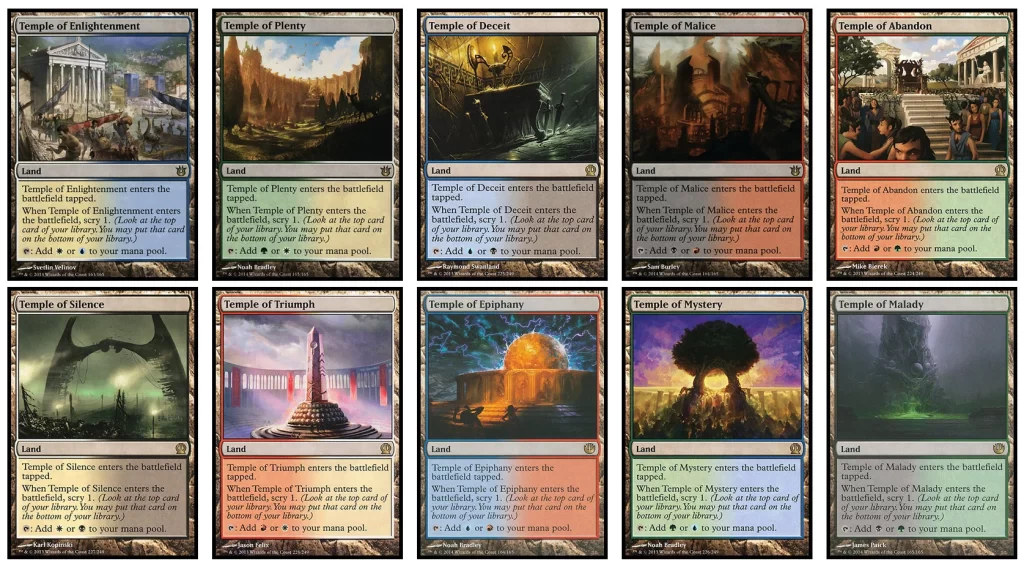
The golden rule: play the land that keeps the most doors open
If you only remember one idea, make it this:
Your land drop should maximize your options next turn, not just this turn.
That usually means:
- You prioritize the colors you’ll need soon (especially double-pip costs like UU, BB, etc.)
- You avoid locking yourself into one color when you could keep two colors available
- You don’t burn a land that “needs a condition” before you’ve met that condition
This is why sequencing is so tied to your mana curve. A deck with a lot of two-drops and three-drops cares a lot more than a deck that’s basically ramp + haymakers.
The tapland question: should you always play tapped lands first?
A lot of players follow a simple rule: “play your tapped lands early so they don’t mess you up later.” That rule isn’t dumb. It’s just incomplete.
Yes, if you’re going to play an ETB tapped land at some point, the least painful turns are usually:
- Turn 1 (if you don’t need an untapped one-drop)
- Any turn where you’re not using all your mana anyway
But here’s what that rule misses:
Sometimes the “correct” early land is an untapped land
Because you need to:
- cast a two-drop on curve
- hold up interaction
- play a ramp spell that fixes colors
- enable a conditional land on the next turn (more on that below)
Some tapped lands are worth earlier priority than others
A tapland with upside (like scry) can be worth playing earlier than a “no upside” tapland, because it gives you selection now, not later.
So the better rule is:
Play tapped lands early only when they don’t take away a turn you needed.
If you’re staring at a hand where turn two matters, don’t donate that turn to your land.
Sequencing conditional lands: this is where most mistakes happen
A lot of the “good” nonbasic lands are only good if you help them.
Here are common patterns you should plan for.
Checklands: don’t strand them
Checklands care about basic land types (or typed duals). If you play your checkland too early, it may come in tapped when it didn’t need to.
In plain terms: if your hand is basic + checkland, it’s often correct to lead with the basic so the checkland comes in untapped next.
Also, your deck needs enough typed sources for checklands to behave. If you don’t have that density, you’re basically playing more taplands than you think.
Slowlands: they want you to make land drops
Slowlands tend to be great if your deck reliably hits its early land drops. If your deck is low-land or super spell-heavy, they’ll betray you more often.

So if you keep a two-land hand with a slowland, plan your first two turns carefully. Missing a land drop turns it into a tapland at the worst time.
Fastlands: use the window
Fastlands give you a generous early window. But once you’re past that, they can turn into “surprise taplands.” That’s not a reason to avoid them. It’s a reason to sequence them early if you can.
If you already know your turn four play needs untapped mana, don’t casually save the fastland for turn four.
Fetchlands: crack now or wait?
Fetchlands are powerful because they:
- fix colors
- thin the deck a tiny bit
- shuffle away unwanted cards after top-deck manipulation
- conceal information (sometimes)
But the real skill is knowing when to fetch immediately and when to wait.
Fetch early when you must hit a color on curve
If your hand needs white on turn two and blue on turn three, don’t get fancy. Fetch what makes your curve work.
Wait when you’re about to gain information
If you’re going to:
- cast a cantrip
- scry
- surveil
- tutor to the top
…then waiting to fetch can be correct because you might want the shuffle later (or you might find you don’t need it).
Don’t take extra damage for no reason
If fetching forces a shockland decision, think about the matchup and your role. If you’re the control deck, your life total is a resource. If you’re racing, it’s a clock. Don’t autopay 2 life just because you can.
“When” to play your land during the turn matters too
Most players slam their land immediately in main phase one. That’s fine a lot of the time. It’s also a missed opportunity in others.
Here are the real reasons to delay your land drop:
- You might draw cards and want to choose a different land
- You want to force your opponent to act with less information
- You want to bluff interaction (or avoid showing you can’t have it)
And there are reasons to play it early:
- You need the mana now
- The land has an effect you want before spells (like scry)
- You want to represent a combat trick or interaction
This isn’t about being sneaky for no payoff. It’s about recognizing that “land drop timing” is part of sequencing.
A simple land sequencing checklist (use it every game)
Before you play your land for turn, ask:
- What do i need to cast next turn? (colors and total mana)
- Do i need to keep mana open this turn? (removal, counterspell, protection)
- Is any land in my hand conditional? (will it be better if i wait / play something else first?)
That’s it. If you answer those three questions honestly, you’ll fix a big chunk of your sequencing errors.
Real examples (the kind that decides games)
Example 1: basic + checkland + two-drop
Hand: Plains, checkland that cares about Plains/Island, two-drop that needs white.
If you play the checkland first and it enters tapped, you might miss your two-drop. If you play the Plains first, your checkland is often untapped on turn two, and your curve works.
Example 2: tapland vs holding up interaction
You’re on turn three with a two-mana removal spell in hand and an opponent who is about to slam a must-answer threat.

If you play a tapland here, you may lose the ability to answer it on time. Sometimes the correct play is to take worse fixing now so you can actually interact.
Example 3: fetchland + top-deck manipulation
You have a fetchland and a scry effect. If you fetch first, you might shuffle away a card you would have kept. If you scry first, then decide whether to fetch, you get to keep the good card and shuffle the bad one.
Sequencing creates free value when you let the order work for you.
Conclusion: good sequencing makes your deck feel “stronger”
The funny part is this: when you fix land sequencing, people think you upgraded your deck.
You didn’t. You just stopped donating turns.
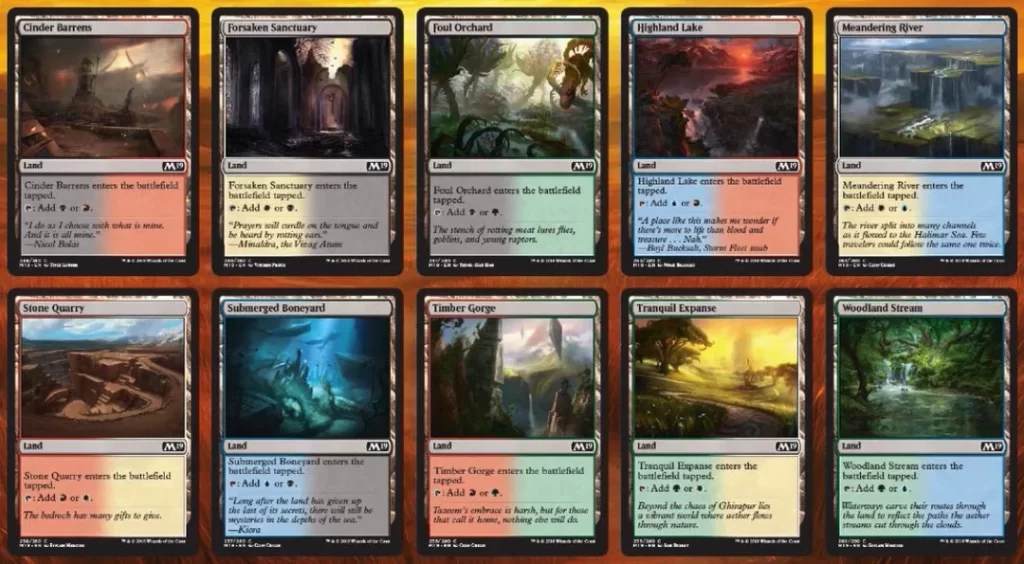
Play lands in an order that protects your curve, keeps mana open when it matters, and makes your conditional lands actually behave. Do it for a week and you’ll notice fewer “i could’ve won if…” games.
And that’s the whole goal.
The post Which Order Should Your Lands Fall? A Practical Guide to Land Sequencing in MTG appeared first on Kraken Opus.
]]>The post Proxy Foundry MTG Proxies: A Great New Option for Proxy Printing appeared first on Kraken Opus.
]]>Proxy Foundry feels like it was built by people who actually shuffle decks, not people who just figured out how to print rectangles.
What Proxy Foundry MTG proxy printing is (and who it’s really for)
If you only think of proxies as “cheap replacements,” you’re missing half the point. Most players using proxies are doing one of these:
- Playtesting a deck before buying real copies
- Building a Commander list where one card costs more than the rest of the deck
- Maintaining a cube with consistent card quality across the whole pool
- Making alt-art or full-art versions that match the vibe of the deck
Proxy Foundry leans into that reality. The messaging is basically: these are for real play, with real shuffling, in sleeves, on a table. Not paper cutouts sliding around like sad bookmarks.
And because it’s a newer shop, it’s also easier to see what they’re aiming for. They’re not trying to be everything to everyone. They’re trying to be a reliable “proxy printer for people who actually play.”
Print quality that matters: card stock, color, cut, and the shuffle test
When people say “good proxies,” they usually mean four boring things:
- Text is crisp (rules text should not look fuzzy)
- Color is stable (especially blacks, gradients, and skin tones)
- Cuts are clean (corners and edges look consistent)
- The deck feels like a deck (thickness and flex are close enough that you stop thinking about it)
Proxy Foundry talks a lot about “real deck feel,” and that’s the right target. The goal is not “museum replica.” The goal is “i can shuffle this for three hours and not hate it.”
They also call out batch consistency, which is a sneaky big deal. A lot of proxy orders look fine until you reorder later and half the deck has slightly different contrast. If you’re building a cube, that kind of drift is annoying.
Tools that make Proxy Foundry MTG proxy printing easier than it should be
One thing that stands out is that Proxy Foundry isn’t just “upload files and pray.” It has actual tools aimed at MTG workflows.
The MTG Card Creator (custom cards, quick prototypes)
Proxy Foundry includes an MTG Card Creator that lets you build a custom card layout, upload artwork, set mana cost, type line, rules text, and even power and toughness. If you’ve ever tried to prototype a custom card and got stuck in formatting hell, this is the kind of tool that saves you an hour of tinkering.
It also makes proxy printing feel more like building a deck, not like ordering business cards.
A site that already has MTG content and comparisons
Proxy Foundry is publishing MTG articles that are pretty grounded. For example, if you’re still deciding between proxy printers, their comparison post is worth reading:
PrintMTG vs PrintingProxies: which proxy card printer is better?
And if you’re newer (or your friend is new and keeps asking “what format is this”), this one is a useful internal reference to share:
Beginner’s Guide to Formats: Standard vs Modern vs Pioneer vs Commander
That kind of content matters because it signals the company is building a real ecosystem, not just a checkout page.
Turnaround time and communication (the unsexy part that ruins game night)
Proxy printing has one unforgivable failure mode: the cards show up after game night.
Proxy Foundry positions itself around smooth ordering, careful packing, and “no surprises” quality control. i like that framing because it’s basically admitting the truth: the product is only as good as the moment it arrives. A perfect print that shows up late is still a failure.
Because Proxy Foundry is tied to a real print operation, it also has clear contact info and a physical location listed. That’s not a guarantee of anything, but it does move it out of the “mystery website” category.
Proxy etiquette and legality (quick reality check)
This is the part where people either get weird or pretend it doesn’t exist.
- Sanctioned tournaments: proxies generally are not allowed, except for very specific judge-issued replacements under tournament rules.
- Casual play: most of the proxy world lives here. Your playgroup, your cube night, your kitchen table Commander, and any event where the organizer explicitly allows playtest cards.
Wizards has also been pretty direct in the past about not wanting to police personal, non-commercial playtest cards, while still requiring authentic cards for sanctioned play. So the adult approach is simple: be honest, follow the event rules, and don’t try to pass anything off as real.
Proxy Foundry’s own disclaimer language is in that same lane: unofficial, personal use, playtesting, casual play, support the original publishers when you can.
How to get better results when you order proxies (without becoming a print nerd)
You don’t need a design degree. But a few choices make a big difference:
- Use clean source images when possible (blurry in, blurry out)
- Avoid ultra-dark edits that crush details in the art
- Keep rules text readable, especially on custom designs
- If you’re building a cube, order in batches so the print run stays consistent
- Sleeve your deck if you care about “feel.” Sleeves hide tiny differences and protect the cards anyway
This is also where Proxy Foundry MTG proxy printing shines as a “new” option. It’s clearly trying to meet players where they are: decklists, cubes, custom art, and practical play.
Conclusion: why Proxy Foundry is worth paying attention to
Proxy Foundry is a strong new MTG proxy printing company because it’s focused on the stuff that actually affects games: readability, consistency, shuffle feel, and tools that match how players build decks.
If you want proxies that feel like they belong in a real deck, plus a site that’s actively building MTG resources around the product, Proxy Foundry is an easy one to put on your shortlist.
The post Proxy Foundry MTG Proxies: A Great New Option for Proxy Printing appeared first on Kraken Opus.
]]>The post What is Faerie Schemes Deck in MTG? appeared first on Kraken Opus.
]]>Alela, Artful Provocateur – The Heart of the Deck
Every great scheme needs a mastermind, and for this deck, it’s Alela, Artful Provocateur. She’s the kind of commander that makes you wonder how much trouble one card can cause. Turns out, a lot.
Alela is a flying, deathtouch, lifelink powerhouse who generates a 1/1 flying faerie token every time you cast an artifact or enchantment. Simple, right? The beauty of this is that it snowballs fast. Play an enchantment, get a faerie. Cast an artifact, get a faerie. Suddenly, you’ve got an air force that can chip away at your opponent’s life total, block threats, and overwhelm the board.
The Creature Lineup – Building the Swarm
Creatures in this deck aren’t just bodies on the field. They’re tools, each with a specific purpose that either fuels Alela’s token generation or benefits from the growing swarm.
- Animating Faerie – This one is fun. You can turn one of your artifacts into a 4/4 creature, which is a neat way to make use of utility artifacts that might otherwise just sit there.
- Arcanist’s Owl – Four mana for a 3/3 flyer that lets you dig for an artifact or enchantment? Yes, please. It keeps the faerie train rolling while also ensuring you’re consistently drawing into more resources.
- Puppeteer – This guy’s all about control. You can tap him to steal creatures with power equal to or less than the number of artifacts you control. It’s a delightful way to swing momentum in your favor.
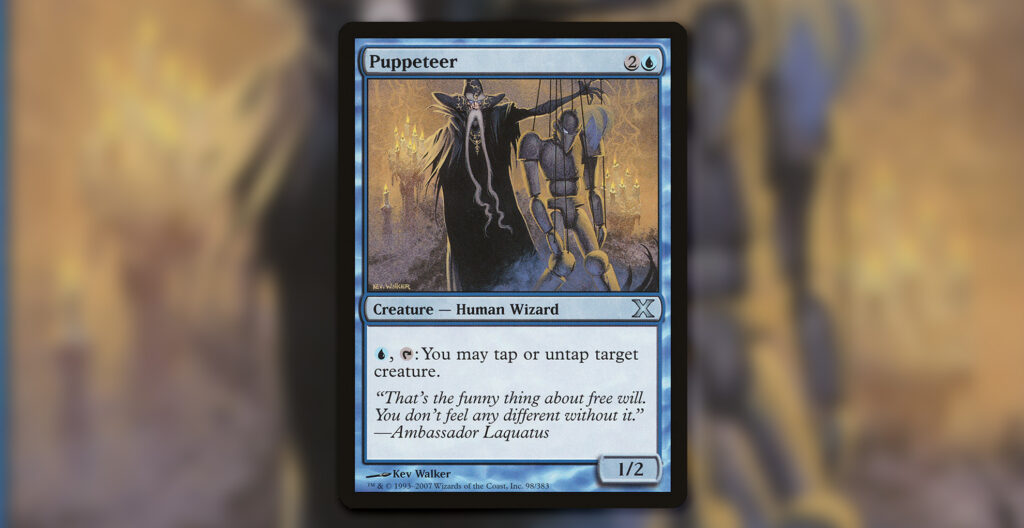
Artifacts and Enchantments – The Faerie Factory
Alela doesn’t work without her artifacts and enchantments. They’re the engine that keeps this deck moving.
- Midnight Clock – I love this card. Not only does it generate blue mana, but once enough time counters accumulate, you get to shuffle your hand and graveyard into your library and draw seven fresh cards. A full reset that can swing the game.
- Conclave Tribunal – This enchantment helps lock down big threats while triggering Alela’s token-making ability. It’s cheap if you convoke it with faeries you already have on board.
- Shimmer Dragon – If you’ve ever wanted a flying hexproof beast that draws cards like crazy, this is your guy. With enough artifacts in play, Shimmer Dragon can quickly turn into a game-winning engine.

Spells to Control the Board
Sometimes you need to throw a wrench into your opponent’s plans. That’s where spells like these come in.
- Drown in the Loch – It’s versatile. You can counter a spell or destroy a creature depending on how many cards are in your opponent’s graveyard. This card is an all-star for disrupting any strategy.
- Mortify – Simple and effective. Destroy a creature or enchantment at instant speed.
- Thought Erasure – A little peek at your opponent’s hand is always a good thing. This lets you make them discard something crucial while surveiling to set up your next draw.
Lands to Keep the Mana Flowing
The mana base is critical since this is a three-color deck (blue, black, and white). A good mix of dual lands and utility lands keeps everything running smoothly.
- Watery Grave – Sure, it might cost you 2 life to have it enter untapped, but that flexibility is often worth it.
- Temple of Silence – A tapped land that lets you scry 1 when it enters the battlefield. It’s a small bonus, but one that adds up over the course of a game.
- Azorius Guildgate – A budget option that taps for blue or white. Nothing flashy, but it gets the job done.
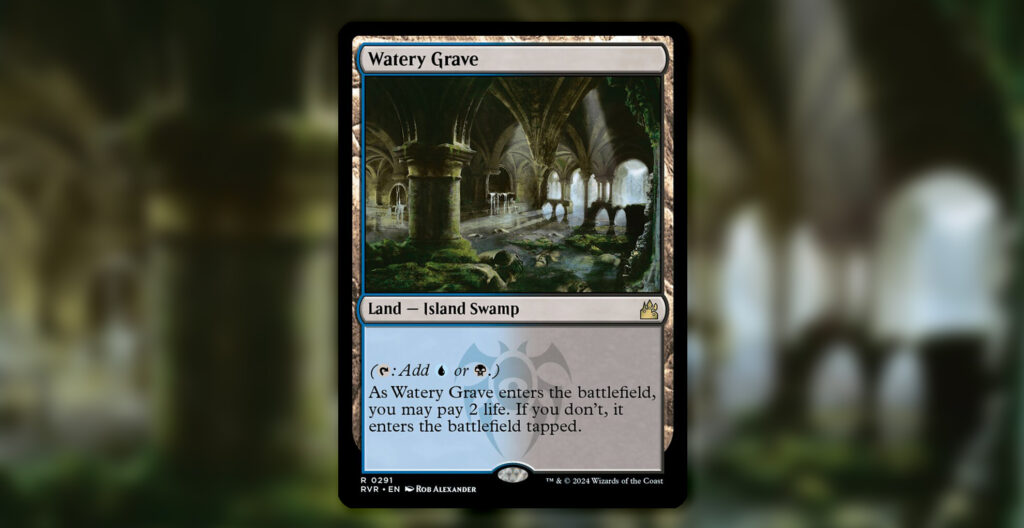
Playing the Deck – What’s the Plan?
Here’s the basic idea: get Alela out as soon as possible and start casting artifacts and enchantments. Every spell adds to your swarm of faerie tokens, creating a board that grows stronger with each turn.
Mid-game is where the deck really shines. Your faeries can attack, block, and convoke spells like Conclave Tribunal. Shimmer Dragon will draw you cards while safely hiding behind hexproof. You’ll outpace slower decks by sheer volume of creatures, and faster decks will struggle to punch through your flying defenses.
By late game, the battlefield should be loaded with tokens. Your opponent might clear the board once, but resetting and building up again won’t take long. Cards like Midnight Clock ensure you never run out of gas, and a well-timed Mortify or Thought Erasure can stop game-ending threats.
Why Play Faerie Schemes?
If you enjoy MTG deck prints that feel like you’re outsmarting your opponent at every turn, Faerie Schemes delivers. It rewards careful play and the ability to adapt. Plus, let’s be honest—watching an army of faeries take over the battlefield feels oddly satisfying.
It might not be the flashiest deck in Magic, but it’s reliable, fun, and capable of surprising wins. Whether you’re new to Brawl or just looking for something different to try, Faerie Schemes is worth a shot. Just be prepared for your friends to glare at you every time you create another faerie token. They’ll get over it—probably.
The post What is Faerie Schemes Deck in MTG? appeared first on Kraken Opus.
]]>The post What Are Utility Artifacts in MTG appeared first on Kraken Opus.
]]>Why Utility Artifacts Matter
Magic: The Gathering is a game of resource management and strategy. Sometimes, the best way to gain an advantage isn’t by casting big creatures or flashy spells but by playing artifacts that subtly shift the tide in your favor. Utility artifacts are often cheap to cast and can fit into a variety of decks, making them versatile additions to many strategies.
Examples of Utility Artifacts
- Sensei’s Divining Top – This artifact lets you rearrange the top three cards of your library, ensuring that you always draw what you need most. It doesn’t win the game directly, but it helps you find the right cards at the right time.
- Sol Ring – A staple in many formats, Sol Ring generates two colorless mana for just one mana. It accelerates your game plan and often leads to an early advantage.
- Pithing Needle – This artifact shuts down specific activated abilities of a named card, making it a flexible tool to counter problematic threats.
- Chromatic Lantern – A mana-fixing artifact that allows all your lands to produce any color of mana. This is invaluable in multi-color decks.
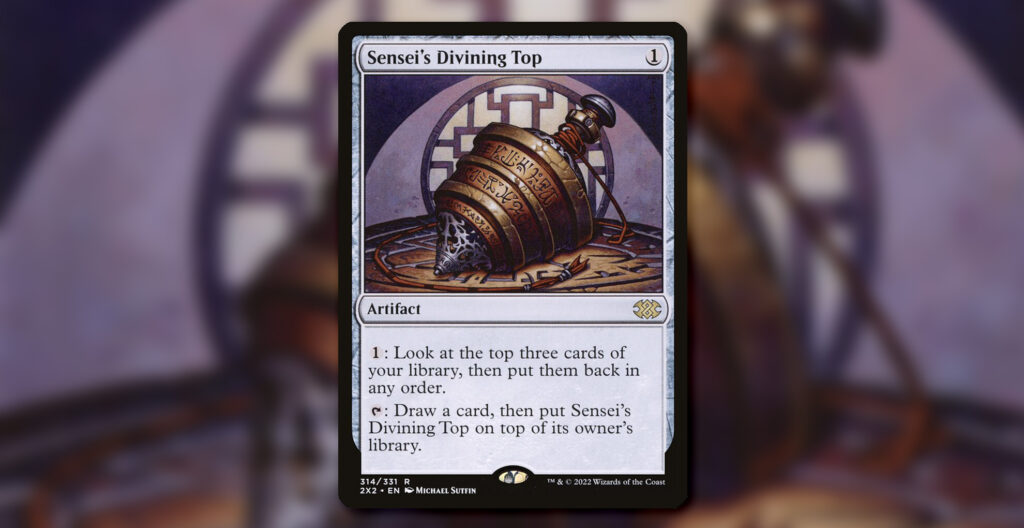
How to Use Utility Artifacts
Utility artifacts shine when used at the right moment. Some players use them as insurance against bad draws, while others build decks around their abilities. For example, a deck built to manipulate the top of the library might rely heavily on artifacts like Sensei’s Divining Top.
In Commander, utility artifacts are often considered essential, providing consistency in a format where decks are 100 cards and singleton. Cards like Lightning Greaves or Swiftfoot Boots protect key creatures from removal, keeping the player’s strategy intact.
Balancing Utility Artifacts
One thing to remember is that while utility artifacts provide long-term value, they can make you a target. Opponents know that an unchecked Sol Ring or Divining Top can spiral out of control. Smart players will prioritize removing these artifacts, so it’s always good to have backup plans or ways to recur them.
In short, utility artifacts are the silent workhorses of MTG. They may not be the flashiest cards, but they often make the difference between winning and losing. If you haven’t been paying attention to these quiet enablers, now’s the time to start.
The post What Are Utility Artifacts in MTG appeared first on Kraken Opus.
]]>